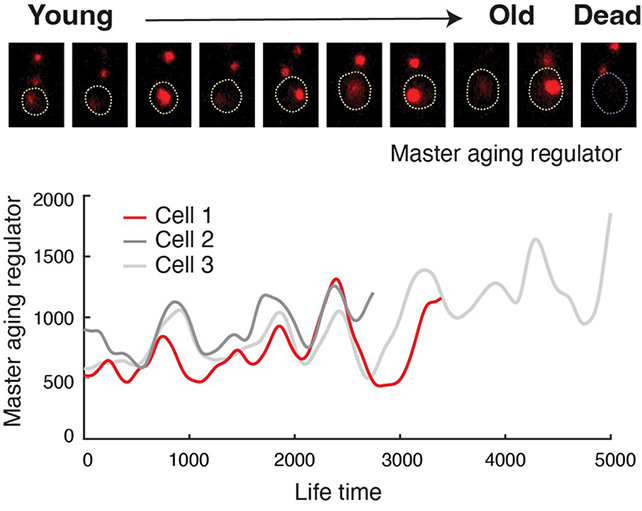Our cells naturally degrade over time, which is part of the reason we're not as mobile and sprightly aged 80 as we are aged 8. Now scientists have figured out a way to boost cell lifespan and longevity using a synthetic genetic 'clock'.
Researchers from the University of California San Diego based their findings on the yeast Saccharomyces cerevisiae, making it unlikely that humans might live forever any time soon – but the team thinks that the work could be developed to eventually help the human body age in a healthier way.
By 'rewiring' the yeast cells, the researchers were able to boost their lifespan by 82 percent on average. It's a promising development in the control of cellular aging and treating age-related conditions.
Key to the study is the editing of the genetic circuits behind regulatory mechanisms that mitigate the wear and tear of specific cellular processes. Once scientists know how these circuits function, the next step is tweaking them.
"These gene circuits can operate like our home electric circuits that control devices like appliances and automobiles," says molecular biologist Nan Hao, from the University of California San Diego.
First, the researchers used computer modeling to figure out how the cell aging circuit worked. Essentially, it swings between two different aging states, both of which can cause wear – sort of like a car's brakes and tires both getting older and less reliable over time.
The next step was to design and implement a tweak to this circuit, so that the cells swung between these two states of aging, rather than committing to one or the other. This lack of commitment meant the aging happened more slowly than it otherwise would within in more typical yeast cells.

One way to think about it is slowing the ticking of a clock: the aging isn't stopping, but it is slowing down. What's more, the engineered cells were more uniform in how long they lasted, compared with untreated cells used as controls.
"Our oscillator cells live longer than any of the longest-lived strains previously identified by unbiased genetic screens," says Hao.
The cells featuring the synthetic genetic circuit were also observed to grow and split faster than they otherwise would, suggesting they remained in good health even after they had been adapted for the purposes of the study.
Yeast cells share a number of characteristics with human cells, which is why they're often used in research, but the findings will now need to be tested in other types of cell to determine whether the increase in longevity still holds.
Careful tweaking of genetic codes inside cells, as in this study, is done through a variety of techniques that are being refined all the time. There are multiple ways in which it can be used – in improving the resilience of crops, for example.
"This is the first time computationally guided synthetic biology and engineering principles were used to rationally redesign gene circuits and reprogram the aging process to effectively promote longevity," says Hao.
The research has been published in Science.
